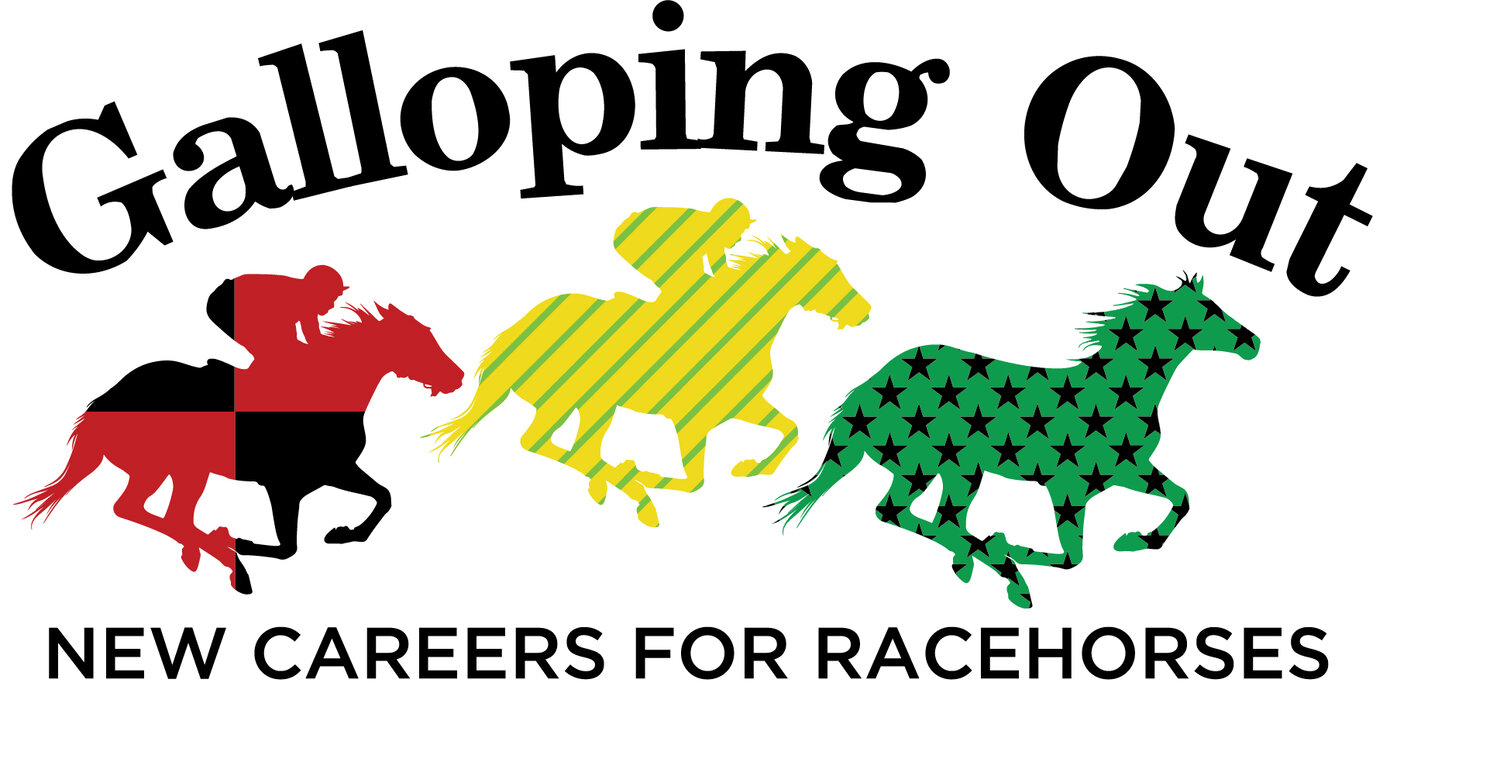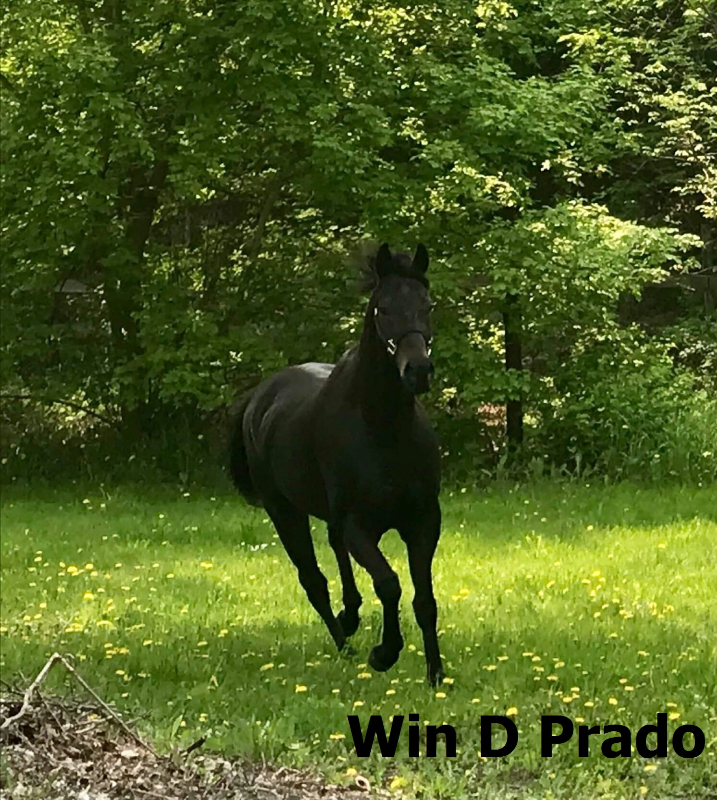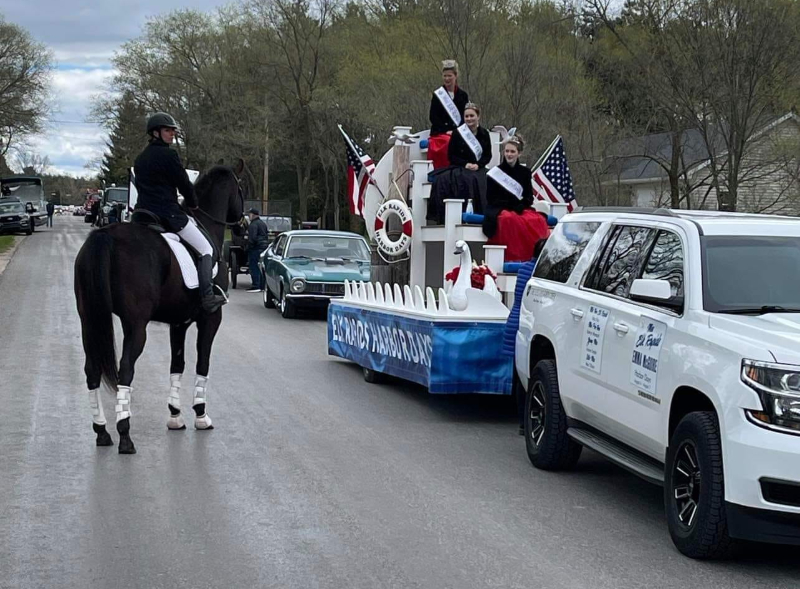
Q&A with Galloping Out
Recently, I spoke with Jan Ely, Program Coordinator at Galloping Out, to learn more about their program.
Where is Galloping Out based?
Galloping out is based at Hawthorne. It also was based at Arlington until it closed last fall.
How did your program begin?
Illinois was home to the last horse slaughterhouse in America. There were two in Texas in the early 2000s, but the slaughterhouse in DeKalb was the last to remain open. Jan worked with a few other people to make it illegal in Illinois, which took three years. Along the way, people asked what they would do with the horses once the slaughterhouse was closed. That was the start of Galloping Out. The slaughterhouse closed in 2007, and Galloping Out opened in 2010.
What happens when a horse is accepted into your program?
Before Galloping Out accepts a horse, Jan visits and assesses the horse, as well as interviews the trainer. She takes photos of the horse and marks the horse as permanently retired in the Jockey Club. GO will do vet work if needed at their vet clinic, which is located on the track.
Galloping Out works with seven farms. Depending on each farm’s capacity and each horse’s situation a farm is chosen. Once at the farm, each horse, even a sound horse, gets six to eight weeks of down time. The team “test drives” all of them before making them available for adoption.
Do you work with other locations or farms in your program?
As noted above, this program is based at the track and sends the horses to program farms. Like Beyond the Wire in Maryland, they have an office on the backstretch.
There are two requirements for horses applying with Galloping Out. They need to be Chicago-based horses and have the ability to get sound enough to be adoptable.
Do you require new owners to do reporting?
Yes, potential adopters are required to complete an application. This includes questions about the rider’s skill level, what they want in a horse, references, and financial stability, among other items. Once approved, the adopter signs a contract, which includes clauses for no breeding and no slaughter. Adopters are told that if the adoption doesn’t work, they just need to call Galloping Out.
Galloping Out friends adopters on Facebook as an additional way to track the horses. However, most adopters can’t wait to send pictures to Galloping Out.
How many horses have gone through your program?
Almost 300 horses have been adopted via Galloping Out.
How does Galloping Out receive funding?
Galloping Out receives funding through grants, TAA-accreditation, TCA, Equis Foundation, and ASPCA. Hawthorne also has a per start aftercare fee during racing season. Plus, Hawthorne writes a check every meet.
Do you have a story about a horse that we can share with our readers?

Win D Prado, who was adopted in 2019, is one of the more memorable horses to go through Galloping Out. He had the second worst bowed tendon that they ever took in the program. He had a very long rehab. Once that was done, a woman from Michigan came to get him. She took him home and boarded him at a farm and then proceeded to buy property and build a barn just for him. Since then Win D has been busy. He attends parades, sorts cattle, jumps a little, and trail rides. This horse is her whole life. Although his initial prospect was weak, he has found his forever home and will do anything for this woman.
If people want to help your program, what can they do?
Although Galloping Out hasn’t held events in a couple years due to the pandemic, they plan to start events again in the future. Volunteers for events would be wonderful. Some of the farms with whom they work also could use volunteers.
To learn more about Galloping Out, please visit their website.

To read another aftercare organization interview, please click here.
